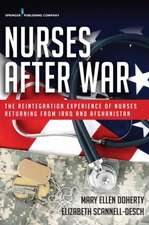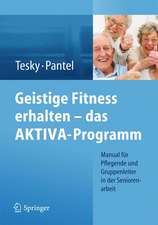Advancing Nursing Science in Tobacco Control: Annual Review of Nursing Research, cartea 27
Editat de Linda Sarna, Stella Aguinaga Bialousen Limba Engleză Hardback – 30 noi 2009
Also highlighted are nursing science efforts and leadership in addressing two barriers to mounting programs of nursing research in tobacco control: the lack of nursing education and training in tobacco control and the limited research funding and mentorship. Finally, the contributors to this volume address the issue of smoking in the profession as it influences nurses' health, interventions with patients, and, potentially, scholarship efforts.
Din seria Annual Review of Nursing Research
- 5%
 Preț: 565.38 lei
Preț: 565.38 lei - 5%
 Preț: 567.76 lei
Preț: 567.76 lei - 5%
 Preț: 566.84 lei
Preț: 566.84 lei - 11%
 Preț: 639.67 lei
Preț: 639.67 lei - 5%
 Preț: 735.96 lei
Preț: 735.96 lei - 5%
 Preț: 796.49 lei
Preț: 796.49 lei - 5%
 Preț: 800.14 lei
Preț: 800.14 lei - 5%
 Preț: 568.66 lei
Preț: 568.66 lei - 5%
 Preț: 596.63 lei
Preț: 596.63 lei - 5%
 Preț: 556.79 lei
Preț: 556.79 lei - 5%
 Preț: 563.89 lei
Preț: 563.89 lei - 5%
 Preț: 568.28 lei
Preț: 568.28 lei - 5%
 Preț: 563.16 lei
Preț: 563.16 lei - 5%
 Preț: 568.28 lei
Preț: 568.28 lei - 5%
 Preț: 569.02 lei
Preț: 569.02 lei - 5%
 Preț: 566.84 lei
Preț: 566.84 lei - 5%
 Preț: 571.22 lei
Preț: 571.22 lei - 5%
 Preț: 566.27 lei
Preț: 566.27 lei - 5%
 Preț: 614.05 lei
Preț: 614.05 lei
Preț: 570.49 lei
Preț vechi: 600.52 lei
-5% Nou
Puncte Express: 856
Preț estimativ în valută:
109.19€ • 112.53$ • 92.18£
109.19€ • 112.53$ • 92.18£
Carte disponibilă
Livrare economică 10-24 februarie
Preluare comenzi: 021 569.72.76
Specificații
ISBN-13: 9780826117571
ISBN-10: 0826117570
Pagini: 433
Dimensiuni: 152 x 229 x 25 mm
Greutate: 0.73 kg
Editura: Springer
Seria Annual Review of Nursing Research
ISBN-10: 0826117570
Pagini: 433
Dimensiuni: 152 x 229 x 25 mm
Greutate: 0.73 kg
Editura: Springer
Seria Annual Review of Nursing Research
Cuprins
Section I: Advancing nursing science in tobacco control: a historical perspective; Chapter 1. Global evolution of the tobacco epidemic and opportunities for nursing research; Chapter 2. Social, historical, and political context of nursing research in tobacco control.; Section II. Nursing research and building the state of the science in the study of tobacco use and addiction; Chapter 3. Use of population-based survey data to monitor the tobacco epidemic (national and international); Chapter 4. Community-based models for addressing primary prevention, including youth; Chapter 5. Behavioral models for understanding nicotine addiction and relapse; Chapter 6. Biological models for studying and assessing tobacco use.




















